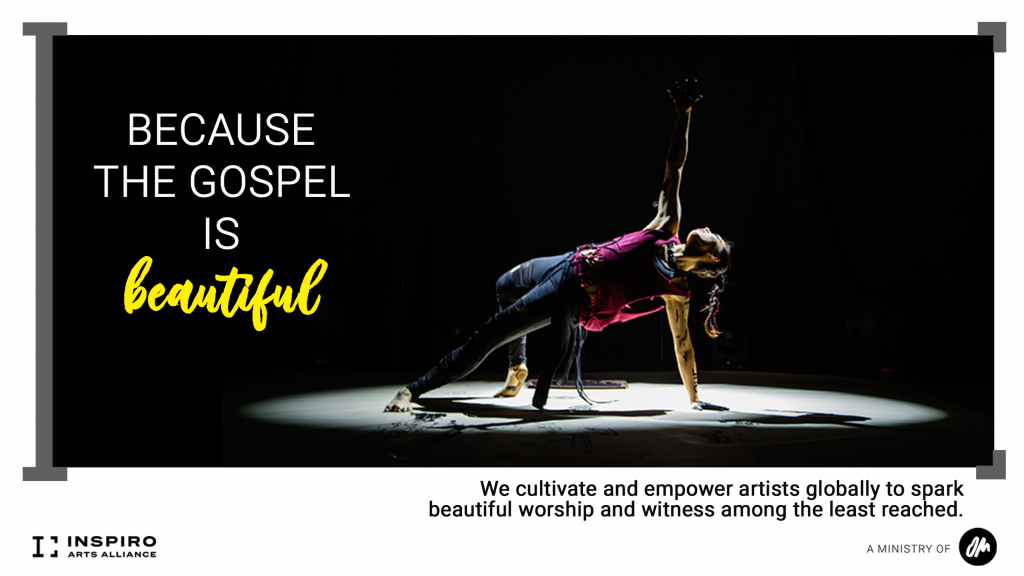What is Ethnodoxology?
Ethnodoxology is a big word that conveys the beautiful picture of multicultural believers worshipping the Lord in their own heart language and art forms.
In technical terms, ‘ethnodoxology’ is a compound of the Greek words ‘ethne’ and ‘doxos.’ ‘Ethne’ means people, and ‘doxos’ means praise. Transliterated, ethnodoxology means ‘the praise of the people.’ But what people? And what kind of praise?
Each of us has natural ways in which we respond in worship to the Lord. The ways that are natural to us may not feel natural to someone else, and vice versa. Altogether, our varying methods of response reflect the multi-faceted character of God. This is true of people across the globe, who have not only personal ways of responding to the Lord but cultural ways, as well. Ethnodoxologists study these multicultural responses, looking at how and why different people groups worship the way they do.

Those operating with principles of ethnodoxology in mind seek to empower local expressions of art in worship. Understanding that worship is more than just what occurs in a Sunday morning service, they seek to incorporate these principles into all of life’s activities. They recognize that, though there are transcultural principles of biblical worship, there are not universal forms for how those principles are applied. They believe that God is delighted to see His children worshipping according to the unique gifts and cultural backgrounds He gives them. Our global expression of worship would be incomplete if it lacked these unique expressions of worship. Ethnodoxologists also encourage believers to grow in their knowledge of the Lord and to strive to understand their culture more fully. From this understanding, more culturally relevant forms of worship can be developed to testify to those watching.
This is one of the exciting things about ethnodoxology. When believers respond in worship in culturally relevant and natural ways, it attracts those in their culture. It shows them that God created them with unique gifts and talents, as well, and can turn into an avenue for them to understand the gospel. A beautiful example of this occurred in a Southeast Asian country steeped in Buddhism, where a trip was taken to film worship videos in collaboration with local dancers and musicians. Many of these local dancers and musicians were not Jesus-followers, but they were intrigued by what they learned and saw during the filming process. The team was asked to travel to the dancers’ village, and they were able to deepen relationships through their visit. By showing respect for the local art and its practitioners, a bridge was built for the team to speak into the lives of these non-believers.
Ethnodoxology encompasses all the art forms, not just those that are mainstream. Music, dance, painting, theatre, and writing are all included, but ethnodoxologists long to see other local arts used to glorify God. Examples of this could be a henna artist in India, a graffiti artist in New York, or a lilandi player in Tanzania. The art forms and expressions may vary, but they all have potential for use as worship. Besides using culturally relevant art forms and instruments, ethnodoxologists also desire to see people worship in their heart language. There are a multitude of languages around the world, and God understands them all. Within ethnodoxology, believers are encouraged to worship in their native language, or their heart language. Praising God in their heart language is not only more natural to them but also more representative of their culture.
Ethnodoxology empowers people to use local arts as worship, and it does so globally. It incorporates a variety of artforms and languages, recognizing that these can be offered back to God as worship. Culturally relevant arts reflect God’s beauty, and they also paint a picture of His character, too large to be contained by one artform or culture. Ethnodoxology recognizes the heart of God for all peoples to know and worship Him through the unique giftings He gave them. As Revelation 7:9-10 says, ‘After this I looked, and behold, a great multitude that no one could number, from every nation, from all tribes and peoples and languages, standing before the throne and before the Lamb, clothed in white robes, with palm branches in their hands, and crying out with a loud voice, “Salvation belongs to our God who sits on the throne, and to the Lamb!”’
To find trips within this category, click here to view “Art, Drama, Music & Puppets” and narrow down your search today!
This article was written by a team (Hollen Hostetler, Beth Sederstrom, Erica Logan and Emily Dickey) from the Inspiro Arts Alliance, a branch of Operation Mobilization. An excerpt was originally published in ShortTermMissions.com’s August 2021 eNewsletter.


